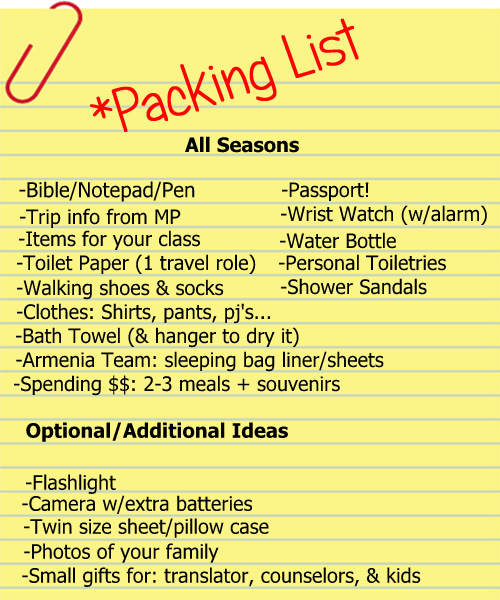The Essential Gorilla Habituation Packing List – its important to have the right packing list before you head out for Gorilla habituation experience safaris in Uganda’s Bwindi Forest.
This packing list if followed can make your gorilla habituation a lot more fun. Ensure you pack the right clothing, gear, documents, and gorilla habituation permits (If using a reputable tour operator, they will have the permits).
 Gorilla Habituation is an experience that doesn’t come cheap and maybe physically demanding – The Full day (4 hours viewing the mountain gorillas) activity usually starts at around 6:30am with the Uganda Wildlife Authority park ranger guide explaining about the whole activity whilst entertaining questions, at 7:00am you will set out for the forest for the entire day till 7:00pm in the evening.
Gorilla Habituation is an experience that doesn’t come cheap and maybe physically demanding – The Full day (4 hours viewing the mountain gorillas) activity usually starts at around 6:30am with the Uganda Wildlife Authority park ranger guide explaining about the whole activity whilst entertaining questions, at 7:00am you will set out for the forest for the entire day till 7:00pm in the evening.
Mountain gorillas are critically endangered, and the African Wildlife Foundation estimates that there are less than 1,000 mountain gorillas remaining in the wild. These small populations of gorillas reside in four national parks spanning three countries: Bwindi Impenetrable National Park and Mgahinga Gorilla National Park in Uganda, Volcanoes National Park in Rwanda, and Virunga National Park in the Democratic Republic of the Congo.
Whether you are visiting Bwindi Impenetrable National Park – Uganda or Volcanoes National Park – Rwanda, the packing list should remain largely the same.
Note: This packing List focuses solely on the items you will want to bring with you on the day of your actual trek; it does not include other items that you might need on your tour or Safari.
Clothing & Shoes
Long-Sleeved Shirt or Jacket – Gorilla Treks begin early in the morning, and you may be chilly at the start of your trek. Depending on the time of year, you may want long sleeves during the entirety of your trek. In addition to warmth, long sleeves are helpful for protecting your arms against stinging nettles or branches.
Short-Sleeved Shirt – Dressing in layers is a good idea. The day involves strenuous activity in the humid jungle, and you may want to shed your outer layers – in the course of the day.
Long Pants – You will be encountering thick vines, fallen trees, and scratchy brush, and you will want to have protection on your legs. We recommend thick leggings or Pants….just not too heavy allow you to move freely while still covering your legs.
Tall Socks – Keeping the biting “safari ants” out of your pants is important! Your guide will instruct you to tuck your pants into your socks, and tall socks are best for this task.
Hiking Shoes – Shoes with a good grip are a must. The terrain can be difficult to navigate, including thick vines, slippery rocks, patches of mud, and more. If your shoes are waterproof, all the better.
Rain Jacket – The national parks where the mountain gorillas live are largely rain forest, and it can rain unexpectedly.
Gloves – Not many hike with gloves, but we recommend you bring a pair on tough gloves to protect your hands from stinging plant thorns.
Headband & Hair Ties
Toiletries & Medicine
Malaria Pills – This is the exception to my earlier note: you don’t actually need to bring your malaria pills with you on the hike, but I wanted to include them as a reminder. All of the four national parks where you can track the mountain gorillas are located in malarial zones, and you should discuss options to safeguard yourself from malaria with your doctor.
Insect Repellant – Malaria aside, being bitten by mosquitoes is no fun and can ruin your experience.
Toilet Paper – It goes without saying that there are no toilets in the jungle. Remember that you must leave the forest with everything that you brought into it, so you may want to bring a plastic bag for this purpose.
Gear & Equipment
Camera – For capturing the moment.
Binoculars – To watch and spot them from afar.
Documents & Money
Documentation – You should come prepared with any documentation or numbers related to your gorillas tracking permit. If booked on an organised Gorilla habituation Safari with us or another tour Company, your Guide will have all necessary Documentation – just relax.
Passport – Don’t forget to bring your passport, as you will need to show it when you check in for the trek.
Local Currency – Remember to tip your guide! Local currency is also useful if you decide you want to hire a porter or want to purchase souvenirs. A porter Cost US$20.
Other
Water – Bring as much water as you can carry. Staying hydrated is important. If booked with an agent, your agen will provide you enough water to take with you on the trek.
Packed Lunch & Snacks – Tracking the mountain gorillas is unpredictable, and you might be hiking through the jungle for as many as seven hours or more. Even if you are only hiking for a few hours, your group will likely stop for a bit to give everyone an opportunity to eat their packed lunches. You should bring some healthy snacks, too, such as nuts or dried fruit, energy Bars to keep your energy up while you are hiking. If booked with an agent packed lunch will be prepared for you to carry on your trek.
We hope this post about Gorilla Habituation Packing List was helpful. If you have Question regarding Gorilla Habituation Packing List, please Contact Us Now.


